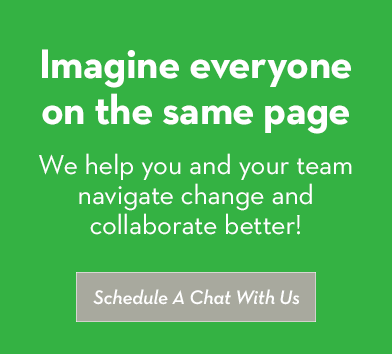
With the fast pace and client-centric focus in creative environments, it can be hard to pause for a second to check in on how your team is working. Before you realize it, dynamics take root that can damage your productivity and your entire work culture.
When you know that something needs to change on your team, but you can’t quite pinpoint the problem, ask yourself these questions to help identify your issues and set a course of action.
Does Everyone Know the End Game?
If you don’t know where you are headed strategically, it’ll be difficult to get there. And if you know where you are headed but your team doesn’t, your team can’t help you get there. Know your vision and communicate it so that everyone is working from the same blueprint.
Is Team Development Happening Regularly?
Your annual offsite, team gatherings, team building experiences, and performance reviews are great things to do. But most people need more frequent efforts to keep them engaged. When you designate the time to prioritize team building experiences as a company, it sets a tone that values collaborative experiences and personal connections.
Spending time with your team can take extra hours, but it builds a foundation that improves how the work gets done and more than pays off in productivity down the line.
Team development is also beneficial when dealing with a conflict between team members. Through shared experiences, you can help your people challenge their perceptions alongside your own, and help them realize their individual accountability and power in the team dynamic.
Are You Focusing on Individuals Over the Team?
Take the individuals out of the conversation a bit. It can help people see more objectively. Instead, focus on the culture and work processes of your team system:
Culture – Does the team have trust, respect, creativity, and diversity in values and insights?
Processes – Process creates culture. How do your processes influence your culture — both positively and negatively? Do you have accountability, clarity in vision, clear decision-making, resources, and leadership?
Our favorite tool for uncovering what’s working and what’s not within a team is the Team Diagnostic Assessment.
Do Leaders Understand Their Impact?
There are incredible tools out there to help executives increase their self-awareness:
- Insights Discovery – Understand your style, strengths, energy, and the value you bring to your team.
- Social Styles – Understand your preferences in how you think, act, and make decisions.
- Business Chemistry – Identify your own behavior pattern and how you interact with others who fit different patterns.
- Leadership Circle Profile – Identify your habitual thoughts and behaviors and how they impact your leadership effectiveness.
And remember: It’s not the tool that matters but what you DO with it.
Could the Team Use Some Experiential Learning?
Yes, we’re talking about things like the stereotypical ropes course. You may be rolling your eyes, but hear us out: There is nothing like being scared shitless to let your humanity come out.
Experiential learning shows a lot about how you and your team cope in high-stress team environments. You get insights about your styles, habits, and behaviors.
You don’t have to do a ropes course. Improv is an excellent activity that encourages risk-taking and feedback. When people play together, something magical happens. It helps us create deeper connections with others. We’re big fans of equine experiences. One of our clients set up mini-Iron Chef competitions. You can even weld and build stuff together.
Whatever you do, don’t forget to debrief afterward! Otherwise, you miss some rich insights that might be hard to recall later.
Does Your Team Trust You to Be Consistent?
Your team needs to know that you will do what you say. If you set up a monthly call with one of your VPs in another city to talk about their wins, challenges, etc., don’t let that meeting fall off the calendar because you have a conflict. Move it.
By pausing and checking in with your team, you can identify areas where your team might need some additional help. We hope that these tools will help your team be stronger and more productive. We’re also here to help.
